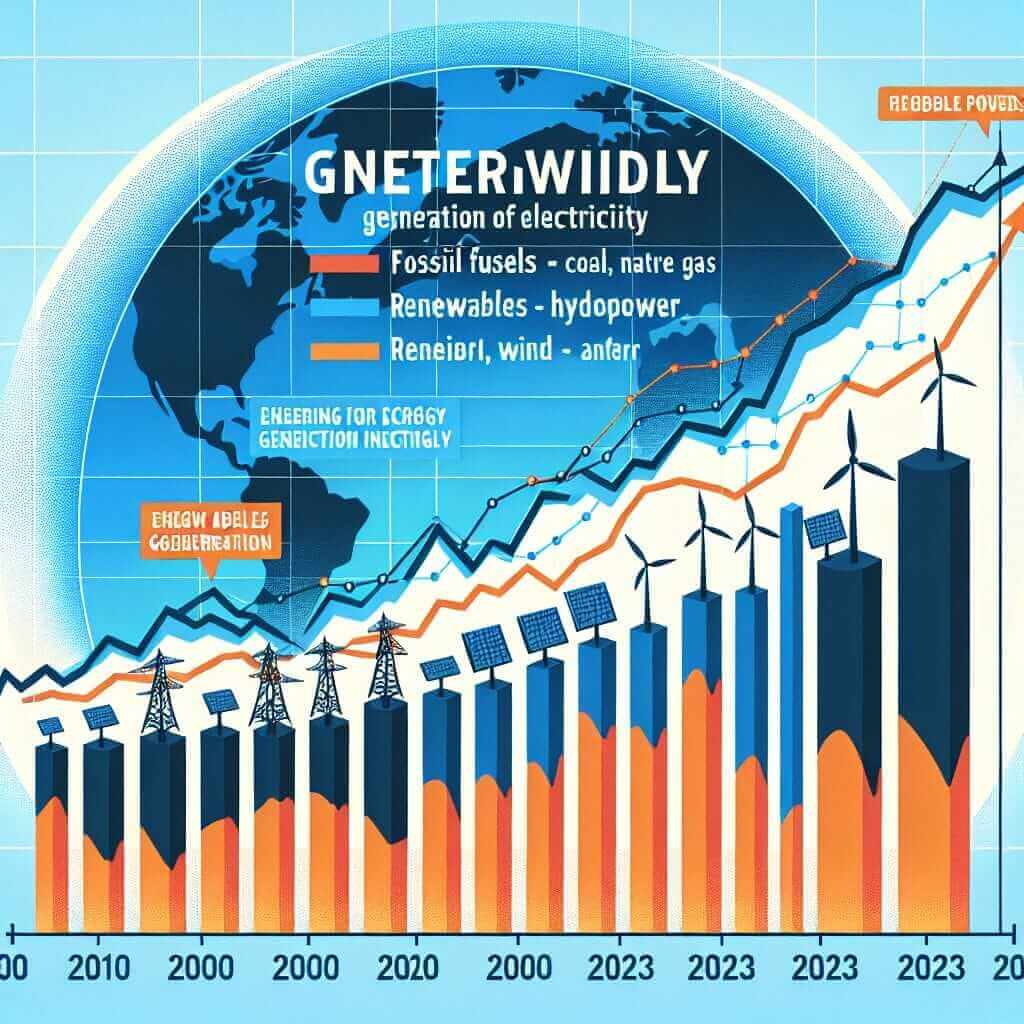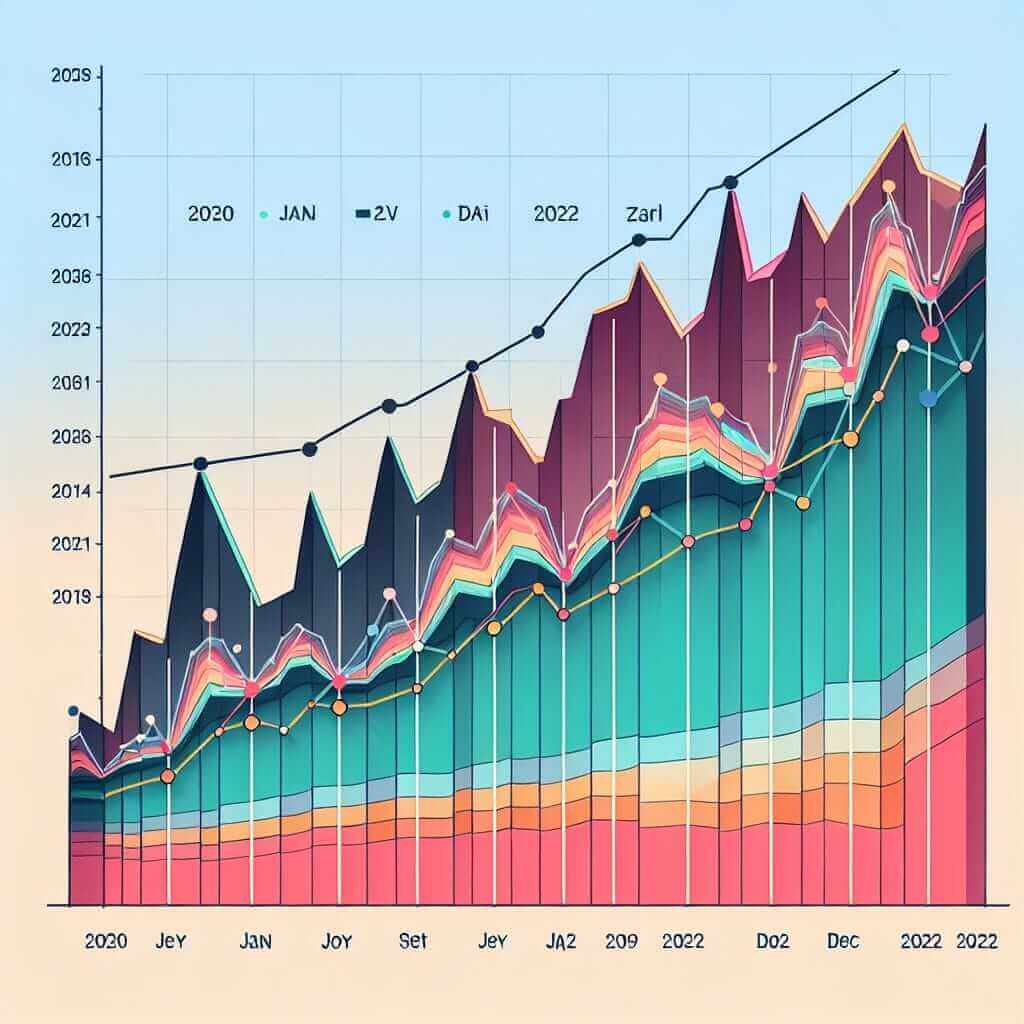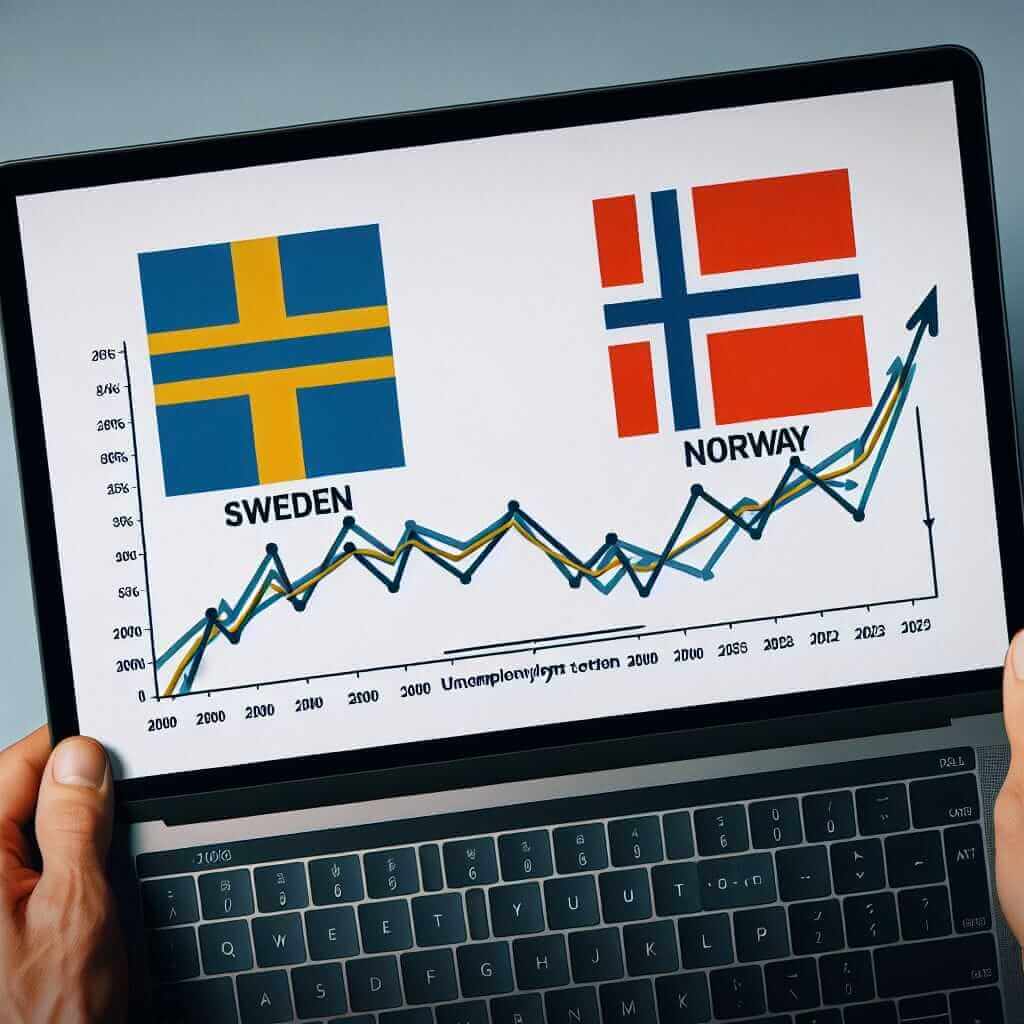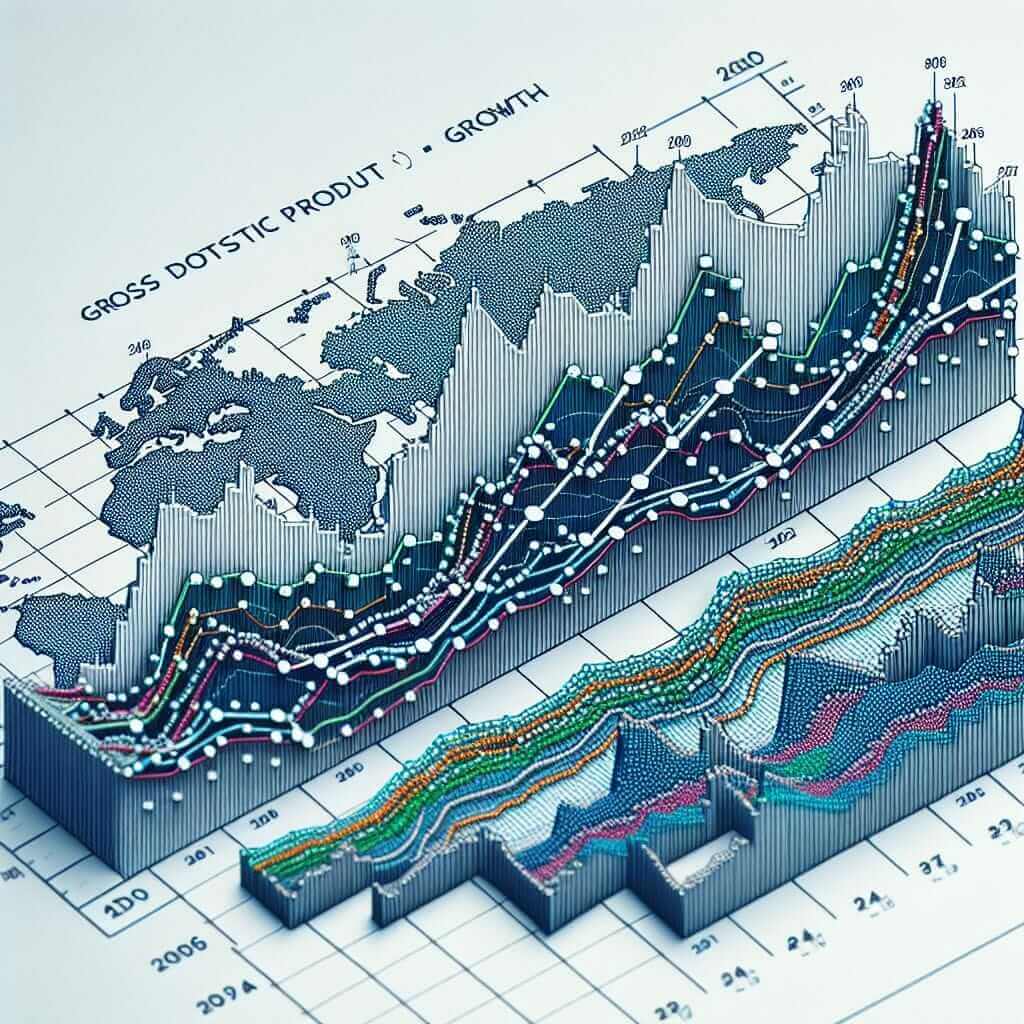The IELTS Writing Task 1 often presents data in various forms, and understanding how to interpret and describe data related to “Electricity Generation by Source” is crucial for achieving a high band score. This topic frequently appears in the exam, requiring test-takers to demonstrate their ability to analyze and present information on energy production trends over time.
Nội dung bài viết
Here are three potential IELTS Writing Task 1 questions related to this topic:
- The chart below shows the changes in electricity generation from different sources in a country between 2000 and 2020. Summarize the information by selecting and reporting the main features, and make comparisons where relevant.
- The table illustrates the percentage of electricity generated from various renewable and non-renewable sources in five different countries in 2022. Write a report for a university lecturer describing the information shown.
- The graph compares the global electricity generation from fossil fuels and renewable sources over the period of 2000 to 2023. Summarize the information by selecting and reporting the main features, and make comparisons where relevant.
Sample IELTS Writing Task 1 Question and Model Answer
Let’s focus on the following question and develop a model answer:
The graph compares the global electricity generation from fossil fuels and renewable sources over the period of 2000 to 2023. Summarize the information by selecting and reporting the main features, and make comparisons where relevant.
 Global Electricity Generation: Fossil Fuels vs. Renewables (2000-2023)
Global Electricity Generation: Fossil Fuels vs. Renewables (2000-2023)
Analysis of the Task
This task presents a line graph requiring you to:
- Identify trends: Analyze how electricity generation from fossil fuels and renewable sources has changed over time.
- Make comparisons: Highlight the key differences in the trends observed.
- Summarize key features: Present the most significant information clearly and concisely.
Model Answer
The line graph illustrates the global trends in electricity generation from fossil fuels and renewable sources between 2000 and 2023.
Overall, the generation of electricity from both fossil fuels and renewables has increased over the period shown. However, the growth in renewable energy sources has outpaced that of fossil fuels, particularly in recent years.
In 2000, fossil fuels dominated global electricity production, accounting for approximately [insert approximate percentage from your graph] of the total. This dominance continued throughout the early 2000s. Conversely, electricity generated from renewables remained relatively low at the beginning of the period.
From 2010 onwards, a noticeable shift occurred. While fossil fuel-based electricity generation continued to rise, its pace slowed down. In contrast, renewable energy sources experienced a more rapid increase, with the trend becoming particularly pronounced after 2015.
By 2023, although fossil fuels remained the primary source of global electricity, the gap between the two had narrowed considerably. This suggests a growing transition towards more sustainable energy sources for electricity production. (Word count: 174)
Key Points to Remember
- Paraphrase the question: Don’t copy the question word for word; rephrase it in your introduction.
- Overview: Provide a general overview summarizing the main trends.
- Specific details: Support your overview with specific data points and comparisons.
- Use appropriate vocabulary: Utilize words and phrases specific to describing trends like “increase,” “decrease,” “fluctuate,” “sharply,” “gradually,” etc.
- Time connectors: Use time connectors like “from,” “to,” “between,” “during,” etc., to clearly indicate different time periods.
- Don’t speculate: Stick to the data provided and avoid making predictions or expressing personal opinions.
Essential Vocabulary
- Renewable energy sources (n.) /rɪˈnjuːəbl ˈɛnədʒi ˈsɔːsɪz/: Sources of energy that are naturally replenished, such as solar, wind, hydropower, geothermal, and biomass.
- Fossil fuels (n.) /ˈfɒsɪl ˈfjuːəlz/: Carbon-based fuels formed from the remains of ancient organisms, including coal, oil, and natural gas.
- Electricity generation (n.) /ɪˌlɛkˈtrɪsəti ˌdʒɛnəˈreɪʃən/: The process of producing electrical power from other forms of energy.
- Trend (n.) /trɛnd/: A general direction of change or development over time.
- Outpace (v.) /ˌaʊtˈpeɪs/: To go or grow faster than something else.
- Dominate (v.) /ˈdɒmɪneɪt/: To be the largest or most important element.
- Transition (n.) /trænˈzɪʃən/: A change from one state or condition to another.
- Sustainable (adj.) /səˈsteɪnəbl/: Able to be maintained at a certain level or rate without depleting resources or causing harm to the environment.
Conclusion
Mastering IELTS Writing Task 1 involves effectively analyzing and presenting data. By familiarizing yourself with common topics like “Electricity Generation by Source,” practicing your data interpretation skills, and developing a strong vocabulary, you can confidently approach this section of the IELTS exam and aim for a Band 7+ score. Remember to follow the tips and strategies outlined above, and with consistent effort, you’ll be well on your way to IELTS success.


